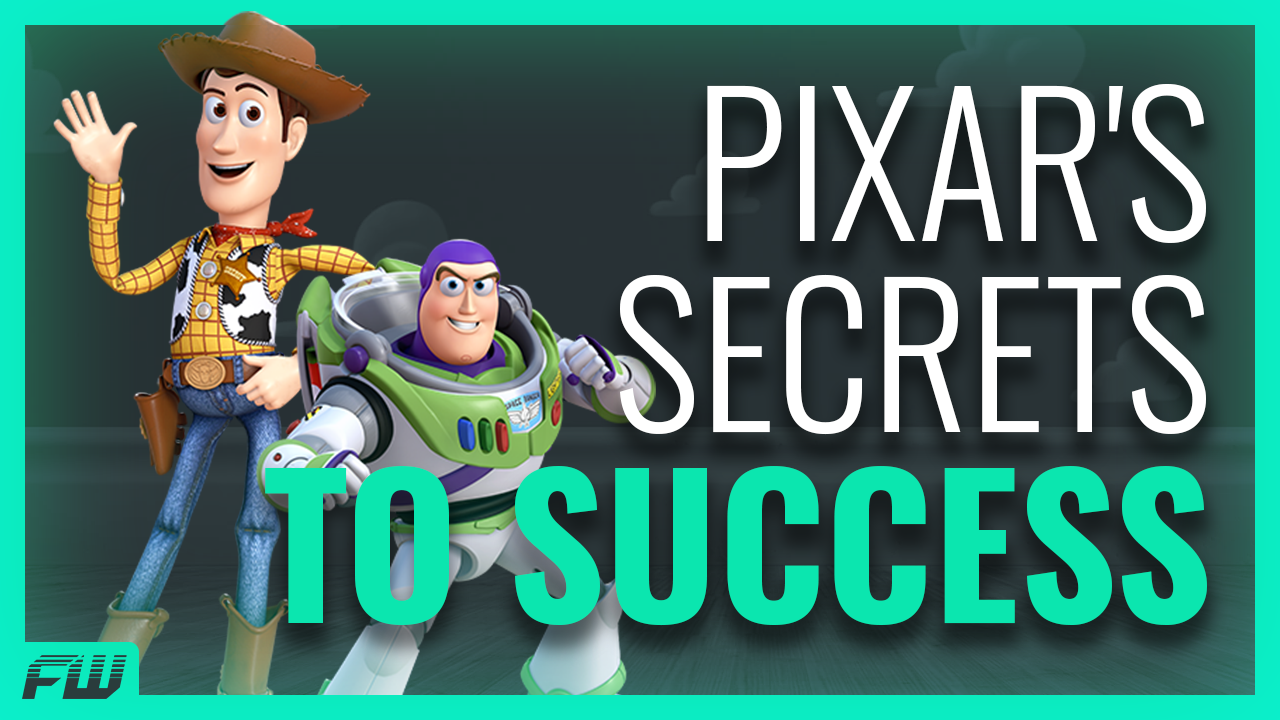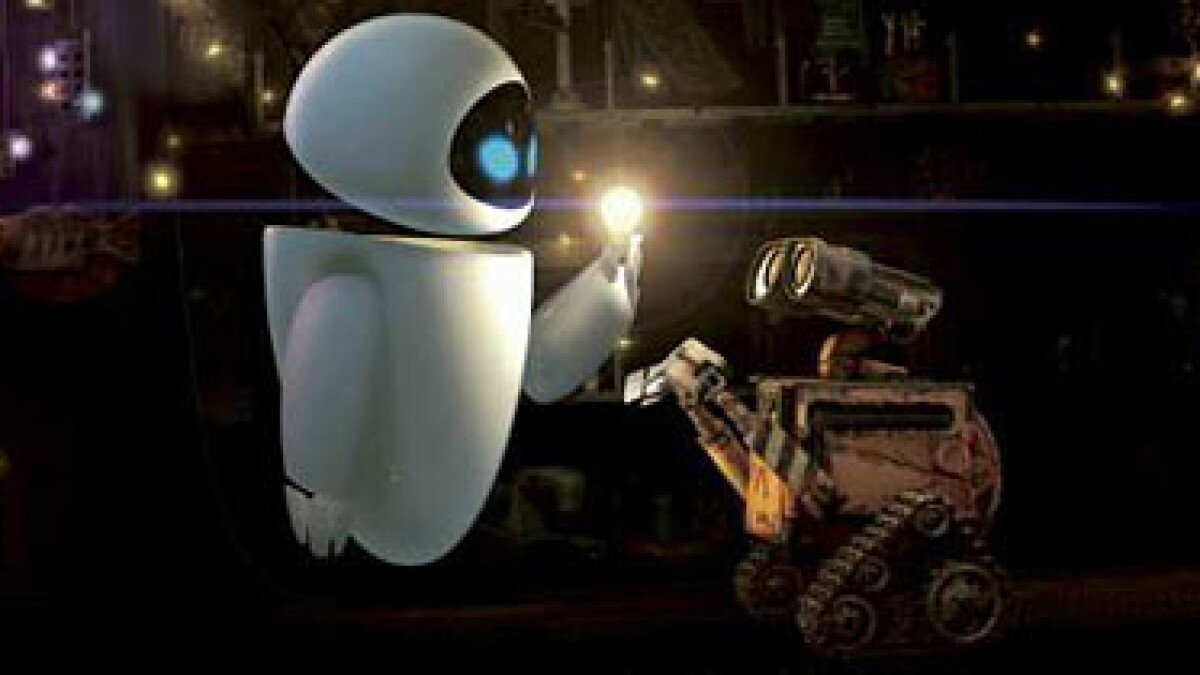Pixar has earned its reputation as the best in film animation. Their name is synonymous with quality. So, how do they do it? How does Pixar continue to craft stories that are loved by critics and general audiences alike? It’s no easy task. Join us as we examine the works of Pixar to see how they beat the odds to become the best animation studio in the business.
Check out the video below:
???? Subscribe & hit the Notification Bell so you never miss a video!
PIXAR… just hearing that single, two-syllable word can conjure up visions of fantastical lands, vibrant colors, and lovable characters. It can resurrect emotions of joy, excitement… and sadness. PIXAR has a way of bringing out the best of us. Of taking the wildest thoughts of a child’s imagination and bringing them to life. Like… “What if my toys were actually alive?” Or “I wonder what life is like for all those ants down in their anthill?”
The Academy Awards first introduced the “Best Animated Feature” category in 2002, just in time for the release of Pixar’s MONSTERS INC. However, the film didn’t win. That honor went to DreamWorks surprise hit SHREK. There were only three films nominated for Best Animated Feature that year. MONSTERS INC., SHREK, and JIMMY NEUTRON: BOY GENIUS. PIXAR may have been beaten out by DreamWorks that year, but they would go on to win Best Animated Picture over and over again with films like Ratatouille, Up, WALL-E, Coco, Toy Story 3 and 4, and most recently, Soul.
Pixar is synonymous with quality animation and superb storytelling. More so than any other studio. When most people think of animated movies, they think of Pixar. So, why is it that Pixar sits comfortably above the rest of their competition? What sets them apart from the slew of animated features that flood cinemas and televisions year after year? Well… first and foremost, they did it first. They weren’t the first studio to make animated movies, of course. But they were the first to make a feature film that was fully COMPUTER animated. These days, that’s pretty much all you see. The days and nights of painstakingly hand-drawing feature-length films are a thing of the past. It’s essentially a dying art form. And while that’s sad in a way, computer animation is just the way of the future. And that’s primarily thanks to John Lasseter and the team at Pixar.
Lasseter says he was originally inspired to make computer-animated films after seeing the light cycle scene from Disney’s Tron and realizing that there were boundless opportunities with the technology. He saw those inspirations come to life with his directorial debut in 1995, TOY STORY. That same year saw the release of GHOST IN THE SHELL, the Japanese anime about a cyborg agent, and the Disney classics POCAHONTAS and A GOOFY MOVIE. And yes… A GOOFY MOVIE is a classic. That’s not up for debate. But, TOY STORY stood out. Not just because of its unique style of animation, but because of the incredible creativity and heart of the story.
Pixar has a way of bringing REAL emotions into their stories and making us care about things that are outside of our usual reality. They explore worlds that we, as humans, could never see and allow us to be a part of them. And that takes us to point number 2. PIXAR is at its absolute best when it takes you fully inside of a unique world and allows that world to function as it should. Example. PIXAR’S FINDING NEMO was released in 2003 and DreamWorks’ SHARK TALE was released in 2004. Both are animated films focusing on fish and other ocean creatures as the main characters. But in A SHARK TALE the fish don’t move like fish. They don’t feel real or natural. They sit inside restaurants and read from menus. There are billboards, and cities, and JellyFish DJs. The audience doesn’t feel like they’re experiencing the depths of the ocean and the plot isn’t specific to this environment.
But in FINDING NEMO, Marlin and young Nemo live inside a sea anemone in the Great Barrier Reef. The anemone looks and functions like an actual anemone would. They aren’t surrounded by underwater billboards or buildings. They’re surrounded by ocean in its natural form. The jellyfish aren’t DJ’s and the animals actually move like they should. You feel as though you’re actually watching a fish and the struggles and limitations that would go along with being a fish. Sure, they’re talking and going on a grand adventure, but it’s an adventure that stays true to life in the ocean and everything we’d imagine it would be.
That’s why MONSTERS INC. works so well, but MONSTERS UNIVERSITY doesn’t. In MONSTERS INC. the story is unique and relevant to the characters being monsters. They work at a Scare Factory, they fuel their city and their lives with the screams of little children. The story plays off of every little kid’s fear about the monster in their closet or under their bed and twists it, making the monsters just as scared of the children as the children are of them. Then in MONSTERS UNIVERSITY they’re just monsters… in college. Besides the fact that all of the students are monsters, the college setting isn’t unique or original. It’s not relevant to the characters being monsters in the slightest. It plays off like an ANIMAL HOUSE geared towards children, but it doesn’t explore anything new or unique to the world of monsters. And as a result, most people think of MONSTERS UNIVERSITY as a lower-tier PIXAR film.
But one thing that PIXAR does better than just about everybody else, what really makes them stand out leaps and bounds above their competition, is their uncanny ability to craft a story that is not only entertaining but is genuine and heartfelt. That’s point number 3 and it’s the most significant. Only PIXAR could make us care so deeply about a lonely, trash compacting robot the way they did with WALL-E. Director Andrew Stanton, who also directed Finding Nemo and its sequel, Finding Dory, creates a world of complete solitude. The entire beginning of the film follows WALL-E as he works endlessly on the seemingly impossible task he’s programmed for. Collecting, compacting, and stacking the world’s waste. As the film goes on we realize that life on earth is non-existent outside of the titular robot. Wide shots and far-away camera angles help to create the feeling of loneliness and showcase how truly alone WALL-E is. Then the moment he first lays eyes on EVE and falls head over wheels, we know something special is about to happen.
The movie hits on a lot of heavy subject matter for a kid’s film. Obesity, destruction of the planet through pollution and litter. But it’s mostly about WALL-E. That little robot with big dreams who dared to be more than just what was expected of him. He dared to save the world. It’s an emotional experience from start to finish in a way that only PIXAR can do. They have a way of showing that love and family can come in different shapes and sizes. That it’s not the same for everybody, but that it’s special and important nonetheless. Woody’s love for Andy in the Toy Story series is one of the purest loves depicted in film. We know that he would do anything for Andy. And when the moment comes at the end of Toy Story 3 for Andy to leave, to move away for college, it’s a heartbreaking moment.
We see an equally heartbreaking moment in Toy Story 2 when Jesse, the cowgirl doll from Woody’s roundup, explains to Woody why she doesn’t trust or believe in the bond between a child and a toy. Through the use of flashbacks and the emotional song “When She Love Me,” which was written by Randy Newman for the movie and performed by Sarah McLachlan, we learn that years ago Jesse had an owner named Emily that meant the world to her. We see Jesse and Emily spending their days together, playing on tire swings and falling into leaf piles. Jesse is happy. But then Emily grows up, moves on, and eventually abandons her. That’s how Jesse sees it, anyway. What makes this moment so sad is that Jesse doesn’t understand what’s happened. She doesn’t age the way people do and can’t wrap her mind around the idea that kids grow up and don’t play with their toys like they used to. The story is important because not only does it give us some important background on Jesse, but it helps Woody accept and handle what will eventually happen to him and Andy.
But hands down, the greatest example of PIXAR’s innate ability to make us weep like little babies has got to be the opening moments of Up. The 2009 whimsical film about an old man who lifts his house from the ground through the use of thousands of balloons has one of the most gut-wrenching openings in cinema. Not just from PIXAR or animated films, but from ALL of cinema. We see a young boy named Carl meet a young girl named Ellie. The two share a love of adventure and exploring. And they immediately share a bond that matures into love. Years later the two marry and move into an old house that Ellie had used as a childhood clubhouse. They spend their lives together fixing the house up while planning their dream vacation to Paradise Falls. They suffer financial hardships and heartache as they learn they can’t have children. But together they persevere. When the two are old, Carl finally manages to plan their dream vacation. But sadly, Ellie dies before the dream can become a reality.
PIXAR films are about loss. About suffering unimaginable heartache. But more than that, they’re about overcoming that loss. About finding life after the heartache and making it through those moments in life that we feel like we’ll never recover from. Following your dreams when they seem unattainable. They’re about exploring worlds beyond our understanding. Maybe someday another animation studio will catch up to PIXAR. And if they do, that’ll be a great day for all of us. Because I think we could all use a little more whimsy, adventure, and heart in our lives. Even if that comes in the form of an animated movie. Don’t forget to like and subscribe if you haven’t already. And I’ll see you in the next video.
Follow us for more entertainment coverage on Facebook, Twitter, Instagram, and YouTube.





